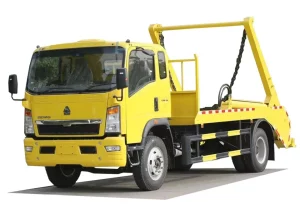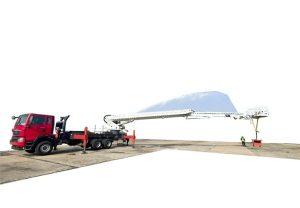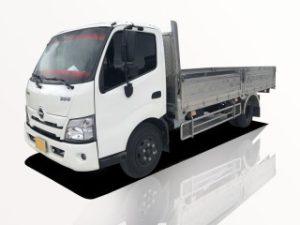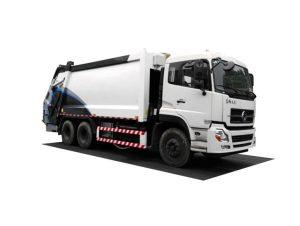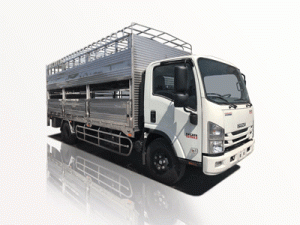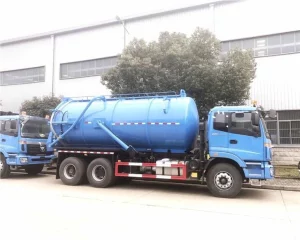Monday to Saturday - 8:00 -17:30
Understanding Oil Tanker Lorries: An In-Depth Guide
An oil tanker lorry, also known as an oil tanker truck or fuel tanker, plays a critical role in the transportation of petroleum products. This article aims to delve into the world of oil tanker lorries, exploring their design, functionality, regulations, and their impact on the environment and economy. With practical examples, tips for safe operation, and a comprehensive FAQ section, this guide will equip you with essential knowledge about oil tanker lorries.
What is an Oil Tanker Lorry?
Oil tanker lorries are specialized vehicles designed to transport various types of liquid fuels, including crude oil, gasoline, diesel, and other petroleum derivatives. They are built with safety features and structural designs that allow them to carry large quantities of these fluids securely and efficiently.
The Design of Oil Tanker Lorries
Oil tanker lorries typically consist of a cylindrical tank mounted on a truck chassis. The design is engineered to minimize the likelihood of spills during transport. Below are the primary components of oil tanker lorries:
- Tank Material: Constructed usually of high-quality steel or aluminum, resistant to corrosion.
- Compartments: Many lorries are divided into compartments to allow for the transport of different fuels simultaneously.
- Pump System: Equipped with pumps for loading and unloading operations.
- Safety Features: Includes emergency shut-off valves and overfill sensors.
Types of Oil Tanker Lorries
1. Single-Tank Truck
This is the most common type, with a single large tank that carries one type of fuel. They are often used for local runs and short distances.
2. Multi-Compartment Tankers
These lorries can carry multiple types of fuel at once, separated by internal walls. This layout is useful for delivering different products to various locations without needing multiple trips.
3. Vacuum Tankers
Used for transporting hazardous materials, vacuum tankers can remove liquid waste from areas like oil rigs or refineries. Their unique design allows for suction-based loading.
4. B-Double Tankers
These vehicles consist of two trailers connected by a fifth wheel, allowing for larger load capacities. They are mainly used in long-distance transportation of fuel.
How Oil Tanker Lorries Operate
Loading Process
Loading an oil tanker lorry requires precision and adherence to safety protocols. Follow these steps:
- Inspect the tanker for leaks and damage.
- Ensure that the loading area is equipped with spill containment measures.
- Connect hoses to the loading system and activate the pump.
- Monitor the fill level to prevent overfilling.
Unloading Process
Unloading an oil tanker lorry is as crucial as loading. Here’s how it is typically done:
- Park the lorry in a designated unloading area.
- Connect hoses from the tanker to the storage tank.
- Activate the unloading pump while monitoring for any leaks.
- Disconnect hoses and ensure all fittings are secure afterward.
Regulations Governing Oil Tanker Lorries
The transportation of oil is subject to numerous regulations to enhance safety and minimize environmental impacts. Key regulations include:
1. Environmental Protection Agency (EPA) Standards
In the U.S., the EPA enforces rules regarding emissions, spill prevention, and required safety equipment.
2. Department of Transportation (DOT) Regulations
The DOT outlines specifications for the design and maintenance of oil tanker lorries to ensure public safety.
3. International Maritime Organization (IMO) Guidelines
For tankers operating at sea, the IMO provides regulations on the construction and operation of oil transport vessels to minimize marine pollution.
Environmental Impact of Oil Tanker Lorries
While necessary for the economy, oil tanker lorries can pose significant environmental risks that need to be managed effectively. Here are some primary concerns:
Spills and Leaks
Accidental spills during loading, transportation, or unloading can have devastating effects on land and aquatic ecosystems.
Air Pollutants
Fuel vapors from tankers can contribute to air pollution, leading to health problems and contributing to climate change.
Safety Measures in Oil Transportation
1. Regular Maintenance Checks
Routine inspections of oil tanker lorries can preemptively identify potential issues, reducing the risk of accidents.
2. Training Drivers
Ensuring that drivers are well-trained in hazardous material transportation can drastically improve safety outcomes.
3. Emergency Response Plans
Having a detailed response plan ready in case of leaks or spills can mitigate damage in case of an incident.
Real-World Examples of Oil Tanker Lorry Operations
Case Study: Local Fuel Delivery Service
A prominent local fuel delivery service utilizes multi-compartment tanker lorries to distribute various grades of gasoline and diesel to gas stations across the region. By employing compartmentalized lorries, they minimize delivery costs and improve efficiency.
Case Study: Waste Oil Removal
A company specializing in environmental clean-up utilizes vacuum tankers to remove waste oil from industrial sites. By adhering to strict safety protocols, they ensure that hazardous materials are transported safely to treatment facilities.
Tips for Operating Oil Tanker Lorries Safely
1. Conduct Pre-trip Inspections
Before hitting the road, inspect the tanker for any issues. Check brakes, tires, and functionality of safety devices.
2. Follow Speed Limits and Traffic Laws
Maintain appropriate speed when driving to reduce braking distance and prevent accidents.
3. Stay Alert and Avoid Distractions
Concentration while driving is essential; avoid using phones or engaging in other distractions.
FAQ Section
1. What is the capacity of an oil tanker lorry?
Most oil tanker lorries have a capacity ranging from 5,000 to 11,000 gallons, depending on their design and intended use.
2. How often should oil tanker lorries be inspected?
Regular inspections should be conducted every six months, with thorough maintenance checks occurring annually.
3. What types of oil can tanker lorries transport?
Oil tanker lorries can transport various liquid fuels, such as crude oil, gasoline, diesel, jet fuel, and other petroleum products.
4. How are spills managed during transportation?
Companies are required to have spill prevention measures in place, including proper loading and unloading procedures, as well as spill response plans.
5. Are there special licensing requirements for drivers of oil tanker lorries?
Yes, drivers generally need a Commercial Driver’s License (CDL) with endorsements for transporting hazardous materials.
6. How do oil tanker lorries impact the economy?
Oil tanker lorries are vital for the distribution of fuel, which drives many sectors of the economy, from transportation to manufacturing and beyond.


